
Volvo V60 engines, drive and performance
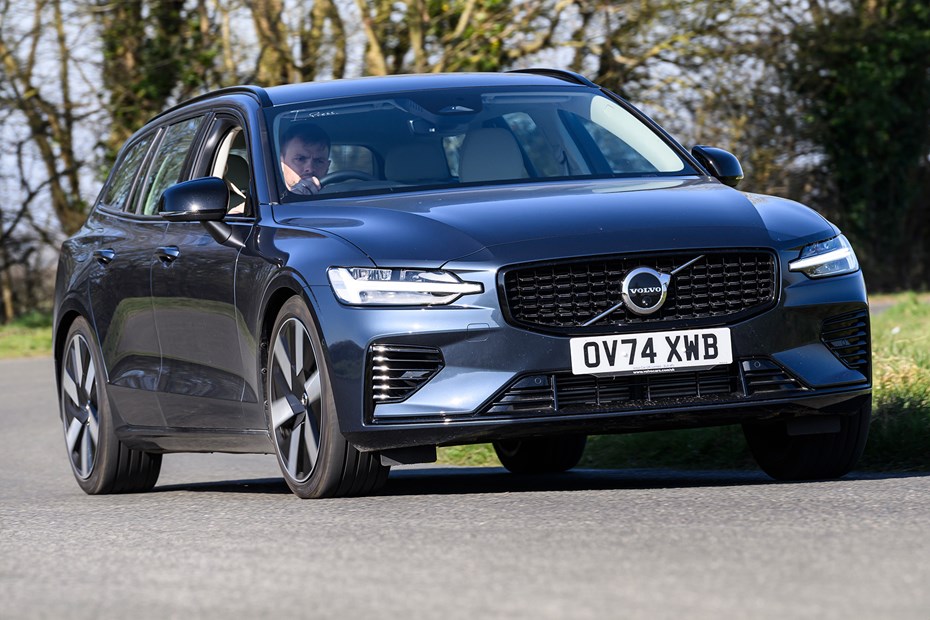
- Petrol mild hybrid and plug-in options available
- Refined, quiet motorway cruiser
- T6 plug-in hybrid is usefully quick
Petrol engines
For the V60’s return, Volvo decided to retain just one of its mild hybrid petrol engines. Now, you can only have the most powerful B4 option. It’s based on a 2.0-litre four-cylinder unit and serves up 197hp. That’s enough for a 0-62mph time of 7.3 seconds. Plus, it has plenty of pulling power, which makes it a great companion on a long motorway cruise.
Previous versions of the V60 were available Volvo’s B3 powertrain. It features the same 2.0-litre engine as its base, albeit in a lower state of tune. It produces 163hp and offers a 0-62mph of 8.2 seconds. When we tested the unit, it proved to be much more lively than those figures would suggest. It sounds quite undistinguished when pushed, but it settles down well on the motorway.
We’re happy Volvo decided to keep the B4 around for the V60’s reintroduction because it’s certainly the engine to have if you crave some performance but can’t afford the T6 PHEV. Still, if you’re shopping used, the old B3 isn’t that far behind in everyday driving. It’s far from being the poor relation in the range.
Hybrid engines
The V60 is also available with a choice of two plug-in hybrid powertrains, badged T6 and T8. They appeal to performance car drivers and company car drivers alike, because both are based on a 2.0-litre petrol that’s both supercharged and turbocharged. However, both can also cover more than 50 miles on electric power alone in official testing.
In both instances, the petrol engine drives the front wheels, while the rears are powered by an electric motor (meaning you get all-wheel drive). The T6 has a combined output of 350hp and a 0-62mph time of 5.2 seconds, while the T8 produces a whopping 455hp and serves up a 0-62mph time of 4.6 seconds. That’s more than a second quicker than the BMW 330e.
Maximum speed is limited 112mph, as are all Volvos. Outright speed isn’t what either of the PHEVs specialise in, though. Where the V60 PHEVs excel are in their mid-range acceleration and quiet, refined motorway cruising with instant overtaking.
In pure electric mode, the T6 oozes luxurious appeal, although the drivetrain isn’t as smooth as it could be when shifting between battery and petrol power. Also, the eight-speed gearbox a little recalcitrant in its responses – not what you’d expect for a range-topping premium estate car.
What’s it like to drive?
- Weighty steering provides good sense of confidence
- Adjustable driving modes available
- Not sporty, but reasonable around corners
Volvo may be gunning for Audi, BMW and Mercedes-Benz drivers with the V60, but you get a sense the company is hoping to win people over with comfort and luxury rather than BMW-beating roadholding. With precise steering and not much body roll around corners, the V60 is competent on twisty roads. It’s been set up to be safe rather than exciting, though – and you can feel the car’s weight if you take corners at speed.
Around town, the V60 is pleasant to drive but, as with many new cars, it’s substantially larger than the previous model – to the tune of 13cm – and wider, too. That means finding a sufficiently large parking space is trickier than it could be.
Comfort levels are good, if not astounding. It can’t quite totally wipe out bumps in the road when fitted with large 19-inch alloy wheels, though. Models fitted with 17- and 18-inch wheels prove a little cushier, with more rubber separating you from the road. Adaptive suspension is available and offers subtly different driving modes including Comfort, Dynamic and an Individual setting, where you can separately adjust suspension firmness, steering weight and the heft of the brake pedal.


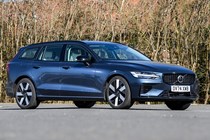
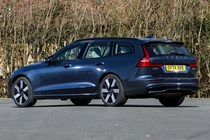
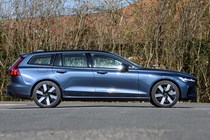
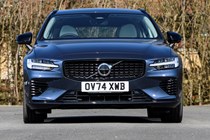

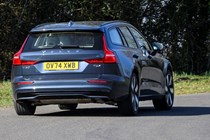
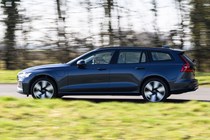




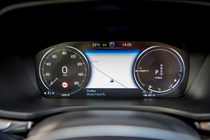
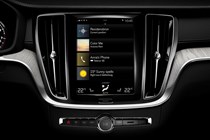
.jpg)
.jpg)
.jpg)

















.jpg?quality=50)
.jpg?quality=50)
.jpg?quality=50)

